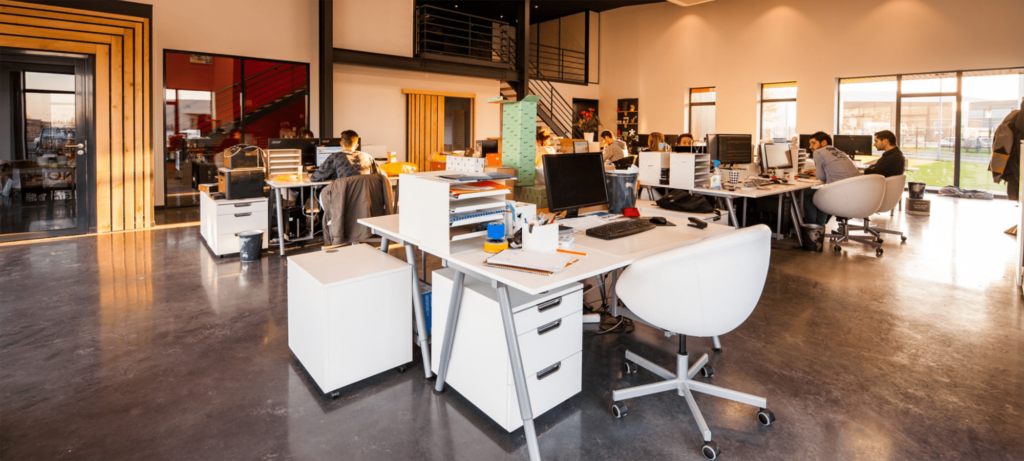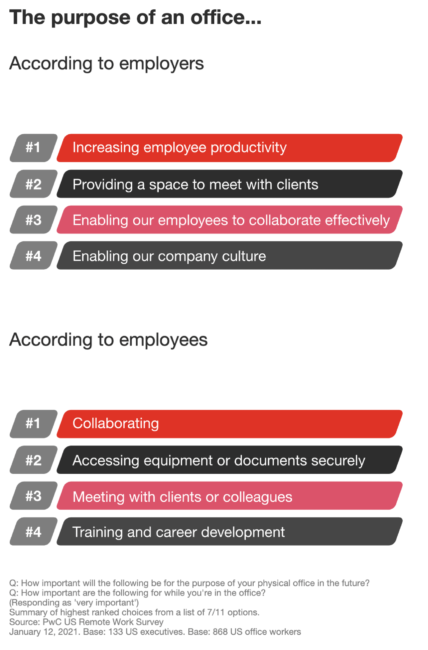
With the rise of technology, there are more opportunities than ever to change the way we work. Here are ten examples of new working methods that have become popular in recent years.
If there’s one thing the pandemic has made clear to workers and employers worldwide, it’s that the traditional office is no longer the only place where work gets done. With technological advances, more and more people are finding that they can work from anywhere — whether that’s at home, in a coffee shop, or even on the go.
These changes have been years in the making. But the massive disruptions — lockdowns and social distancing protocols — served as a jolt to organisations, accelerating a flexible, more agile way of getting work done.
What are new ways of working?
“New ways of working” is a neologism based on the concept of “new work” — a term coined in the 1980s by Frithjof Bergmann, a German professor of philosophy at the University of Michigan, to describe the evolution of work amid the advent of globalisation and digital technologies.
In the 80s, the workplace was undergoing rapid changes. Manufacturing industries, once the biggest jobs generator in the decades after World War II, were in decline and had been overtaken by services industries. The computer and data processing services industry emerged as the fastest-growing and biggest-employing sector of the decade — the tech age in work had begun.
But these changes were just the opening salvo in the evolution of the workplace. Three decades later, organisations would see an even greater period of digital transformation — where workers have more freedom to choose when and where to work, challenging established work systems.
Integrating the internet, automation and cloud computing into the workplace led to a radical departure from the traditional, office-based corporate culture of the 20th century. Bergmann (correctly) predicted that digitalisation would drive “new work,” paving the way for increased worker autonomy and more flexible working arrangements — what people today call new ways of working.
But what exactly does this look like in the modern workplace?
Examples of new ways of working in the office and beyond
There are many examples of new ways of working, but they all have one thing in common: they allow people to work flexibly, often outside the traditional office setting.
Here are three examples of new ways of working that have become popular in recent years:
1. Activity-based working
Activity-based working (ABW) is a human-centric work arrangement in which employees have the autonomy to choose from multiple work settings depending on the kind of work they’re doing. Dutch consultant and author Erik Veldhoen pioneered the concept in his 1994 book, The Demise of the Office.
Rather than assign employees to dedicated desks or cubicles, activity-based workplaces give employees access to different areas of the office depending on the task they need to complete. For example, there might be areas for individual work, group work, and socialising. Some spaces aren’t even in the office — they can be at home or in an approved public space (i.e., remote work).
Rakuten London Office
Source: Rakuten.Today
Workplaces that have embraced activity-based work are characterised by their open floor plans and availability of shared desks — the idea being that communal spaces engender communication and collaboration, which are also hallmarks of activity-based working. However, ABW offices still have specific spaces for deep and focused work, such as meeting rooms and office pods.
Of course, you’re probably wondering if this approach to workspace design is worth it. Research by Veldhoen + Company, the consultancy firm founded by Erik Veldhoen, shows that companies that transitioned to activity-based working saw a 17% increase in workplace satisfaction.
Related Reading: The Manager’s Guide to Activity-Based Working (ABW) in the Hybrid Era
2. Desk booking and hot desking — two approaches to desk sharing
Desk sharing is a smart office set-up wherein employees share desks and workspaces instead of having a designated desk. There are two popular options for implementing desk sharing:
- Desk booking: Also known as desk hoteling and workspace hoteling, this flexible approach to workspace management has desks, workstations and rooms shared between employees on a dynamic schedule. Desk usage can be managed using a desk booking solution like Cloudbooking, allowing workers to book their desired workspace before arriving at the office.
- Hot desking: Unlike desk hoteling, shared workspaces are typically used on an ad hoc basis (e.g., first come, first served) rather than via a formal booking system.
Cloudbooking’s Desk Booking App
Desk sharing is a common workspace set-up in coworking spaces, where workers report levels of thriving that score an average of six on a seven-point scale. The ability to control where they work was a key driver of this satisfaction at work.
Related Reading: Making Sense of Desk Sharing: How to Make It Work for Your Team
Desk sharing can also be a key driver of reduced office costs. In 1993, Ernst & Young (EY) downsized its Orange County offices and turned to office hoteling to shuffle employees in and out of their smaller premises. Though controversial at the time, the decision enabled EY to reduce office space costs by up to 40%.
3. Hybrid working
Before the pandemic, the ability to work remotely or telecommute was largely seen as a work benefit offered to a minority of workers — mostly in industries like tech. According to research by Global Workplace Analytics, only 7% of employers in the US made remote work available to most or all of their workers in 2019.
Of course, the pandemic changed all of that. And even with the easing of COVID-related restrictions, our research on employee attitudes shows that 64% of workers in the UK and US want a permanent mix of remote work, in-office work and working in an approved public space — a set-up known as hybrid working.
Related Reading: The Hybrid Workplace — An Employee Census
Much has been written about the benefits of remote work: better work-life balance, more flexibility and higher productivity levels, just to name a few. But many people don’t know that a sizable portion of the workforce still sees value in the physical office.
Case in point: PwC’s survey of 133 executives and 1,200 US workers found that a third of workers with fewer than five years of work experience were “more likely to feel less productive while working remotely.” They also want to be in the office more often, preferring to be remote no more than once a week.
In addition, the study found that while employers saw the office as a place for increasing productivity, employees believed its purpose was for collaboration and spending time with colleagues, highlighting the future of working from home.
Source: PwC
What new way of work suits your organisation?
The benefits of new ways of working are numerous. For employees, it can lead to a better work-life balance and higher engagement. For employers, it can increase productivity and reduce office real estate costs.
New ways of working are changing the way we work — and there’s no going back. The question, however, is whether employers are ready to embrace the future of work.
Find more insights about new ways of working (NWOW) by following the Cloudbooking blog. If you need a cloud-based solution to enable flexible or hybrid work environments, get in touch with the Cloudbooking team. Cloudbooking’s desk and meeting room booking solutions are packed with features to help managers and employees shift to new ways of work. Contact our team today to schedule an obligation-free demo.





